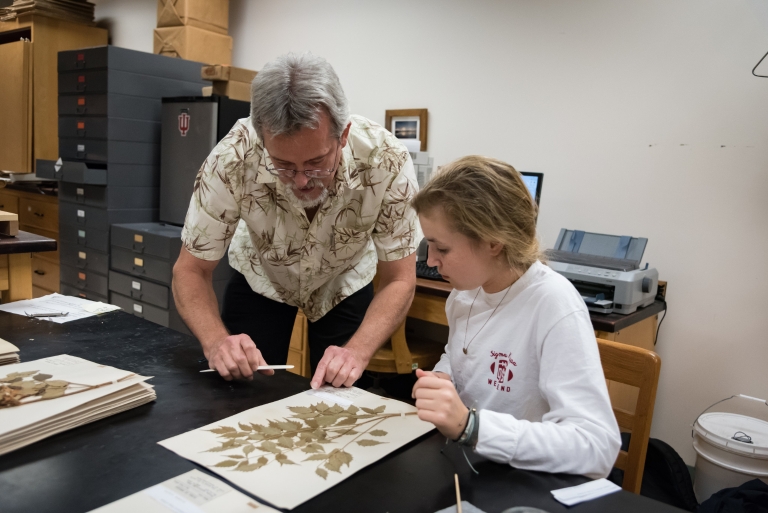[View original article from source.]
The digitization of more than 160,000 plant specimens will provide access to data to researchers across the globe.
Indiana University has completed work to make publicly available its collection of more than 160,000 preserved plant specimens, including over 72,000 specimens representing Indiana flora.
The project, launched in 2014, provides online access to the complete collection of the IU Herbarium. This information is valuable to the global plant research community, as well as backyard gardeners and nature enthusiasts who wish to learn more about the plants in their environment.
"This 21st-century digital herbarium is a gift to the people of Indiana," said Eric Knox, director of the IU Herbarium and a senior scientist in the IU Bloomington College of Arts and Sciences' Department of Biology. "The botanical information system fundamentally transforms how people identify plants and how researchers conduct science. Hoosiers no longer need an elaborate vocabulary of Greek and Latin technical terms to identify their state's native and naturalized flora."
The IU Herbarium was founded in 1885, and its largest single collection is the preserved plant samples of Charles and Stella Deam, the first state forester of Indiana and his wife, who published "Flora of Indiana" in 1940. Many of the other specimens, whose origins span 85 countries, joined the collection over decades through the efforts of IU researchers.
"The digitization of the IU Herbarium is the culmination of five years of continuous effort to transform the university's priceless collection of flora -- entrusted to IU by generations of scientists -- into a resource accessible to experts across the world," IU President Michael A. McRobbie said. "The project's completion also represents a major success within the larger framework of IU's digitization and preservation activities under the IU Bicentennial and exports a small part of our state's spectacular natural beauty to the global community."
Each record in the IU Digital Herbarium includes a high-resolution photo of the preserved plant specimen, its scientific name and taxonomic placement, its collection location, and the name of the person who collected it. Many entries also contain links to the plant's genomic data. The collection is divided into five major plant categories: algae, bryophytes (mosses), fungi, lichens and vascular plants.
The IU Digital Herbarium also includes common plant names, which opens the collection to the general public. Users can search plants in certain regions based upon physical characteristics to help identify plants on a nature walk or distinguish native plants from invasive species.


 The College of Arts
The College of Arts